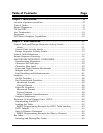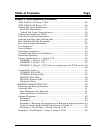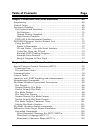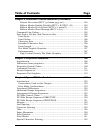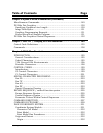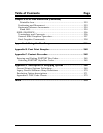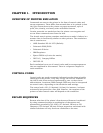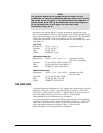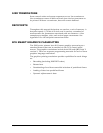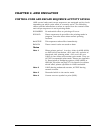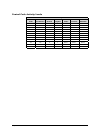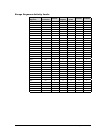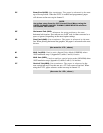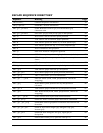
GEK-00029B 5000 Series Programmer’s Manual
9
Examples are shown below of escape sequences as written in the
text: with parameters filled in and written in the BASIC programming
language assuming the use of the LPRINT instruction. The parameter
values are actualized in these examples, but will be shown as
parameters thereafter. Note that parameters are surrounded by angle
brackets (<>).
Tab Clear
Mnemonic: <ESC> [ <p1> g (assume p1=16)
Decimal: 27 91 16 103
Hex: 1B 5B 10 67
BASIC: CHR$(27);"[16g"
Horizontal Tabs Set
Mnemonic: <ESC> [ <p1> ; <p2>... u (assume p1=648,
p2=1386, p3=2808)
Decimal: 27 91 648 59 1386 59 2808 117
Hex: 1B 5B 288 3B 56A 3B 0AF8 75
BASIC: CHR$(27);"[648;1386;2808u"
Expand Characters
Mnemonic: <ESC> [ <p1> ; <p2> SP B (assume p1=200
and p2=200)
Decimal: 27 91 200 59 200 32 66
Hex: 1B 5B C8 3B C8 20 42
BASIC: CHR$(27);"[200;200 B"
CSI AND OSC
A control sequence introducer <CSI> signals the beginning of an ANSI
sequence using the <ESC> code and the left bracket ([). <CSI> (9B
hex) can be used instead of <ESC> [ (1B 5B hex) when the printer is
receiving and processing 8-bit data. <ESC> [ will be used
predominately in this manual for the examples.
An operating system command (OSC) signals the start of a download
sequence using the <ESC> code and the right bracket (]). <OSC> (9D
hex) can be use instead of <ESC> ] (1B 5D hex) when the printer is
receiving and processing 8 bit data. <ESC> ] will be used
predominately in this manual for the examples.
NOTE
The physical spaces in the escape sequences shown in this
publication are only for clarification purposes and are not used in
the actual string. If a space is actually needed in the sequence, it
will be shown as an <SP> in the mnemonic form of the sequence.
In the decimal form, it will appear as a 32, and in the
hexadecimal form, as 20.




